Yes, it’s been a bit of a lull since my seventh summit, Lambert Dome, three weeks ago--thanks all for the kind comments on the story and pics. But I'm-a still trudgin' onward and, in modest bites, upward.
Last fall, three fellow ebikers and I decided to squeeze in a ride to Skagit County's Lyman Pass ahead of a predicted wave of snowy weather in the foothills. The road there traverses private timberland and is gated at the start, however non-motorized recreational use is allowed.
We parked in the tiny town of Lyman, right in front of the "Horniest Tavern in the Northwest," made rather apparent by all the antlers on display inside. From the pub, the mild ride over the pass took us to a bridge over the South Fork Nooksack River at a pretty cascade. Looking northeastwardly, I wondered about continuing on to explore the various spur roads headed more or less in the direction of the Twin Sisters Range and its multitude of beckoning rock horns. I'd scampered all over this horny range in years past, but this far corner, for me at least, was less explored.
We wouldn't push it this trip, but the place was now on my radar for 2023. We'd have to go there, and earlier in the season when the days are longer and the afternoon lounging is loungier.
The rusty-red range of mountains is geologically and visually unique, not just in terms of the equally horny sub-ranges of the North Cascades, but even globally as well. Spread across 15 square miles of sharp, craggy wilderness, it's entirely composed of dunite, an igneous rock that formed in the Earth's upper mantle, then was thrust toward the surface and exposed by erosion. It's one of the largest such exposures of dunite in the world.
For better or worse, the Sisters Range is essentially trailless. A modicum of climbing interest keeps the two highest peaks, the North and South Twins, busy enough from late spring through fall. The South Twin just touches 7,000 feet, the highest point in the range. But the remaining dozen or so named peaks are seldom visited. I can boast of having scrambled to the tops of all but one, Little Sister, the third highest of the bunch. Needless to say, she's high on the list for 2023.
So I offer all this as prelude to Summit #8 of 70, an unnamed, and otherwise unremarkable peak, though it is the southernmost respectable hump of rock in the range. The peak rises to just shy of 5,000 feet about a half-mile south of Heart Lake. We'll just call it Heart Lake Peak for now.
To reach it, Mel, Kiko and I biked over Lyman Pass once again several days ago, and this time continued pedaling up those spur roads to a dead end at 18 miles, with an elevation gain on power-assisted wheels of around 4,000 feet—not bad for a single charge on the bike battery. Ebikes aren’t scooters as some people might think, so getting all the way up there was a pretty decent workout.
The road ended just west of the National Forest Boundary. An easy bushwhack led to a small talus field and minor snow patches, then over a ridge to a frozen lake and a clear view of our objective. After topping a second low ridge, the line to the summit was fairly direct, steep and red, and an enjoyable, straightforward scramble.
Anyone who's climbed in the Sisters will certainly remember the rock, as rough to the touch as coarse, 20-grit sandpaper, as in extremely grippy. The biggest worry is to not scrape your exposed body parts against the hard, crystalline surface so as not to return home with legs and arms a bloody mess.
We topped out at a comfortable perch overlooking Heart Lake, still covered in winter's ice. A ridge to the east ran out to George Peterson Butte and Three Lakes. The lakes aren't visible from here, though I know them well enough. An old trail to the lakes heads up from the east side, above the upper South Fork Nooksack River. We brushed it out some last year, hating to see it fade away (due to road closures), since it's one of the few places in the range where a non-climber can reasonably access this remarkable red-rock landscape. (For anyone tempted to bike and hike into Three Lakes from the east side, note that Road 12, though mostly bikable, is still blocked below Wanlick Pass).
From our lunch-friendly perch atop Heart Lake Peak, the usual splendid view of Mount Baker from the Sisters was not to be had, due to a thick cloud cover over yonder. Clouds parted just enough to see Step Sister and Last Sister Peaks rising along the crest to the north. Most of what we were viewing east of the crest, including Heart Lake, is within the Mount Baker Wilderness. We devoured the view along with a bagel, before returning to the bikes for the long ride back to Lyman.
And thus a wild, mysterious corner of a unique range of peaks was made a little less mysterious. Happily, there are many other hidden treasures in the range that we'll go looking for later this year, for sure, and probably next.


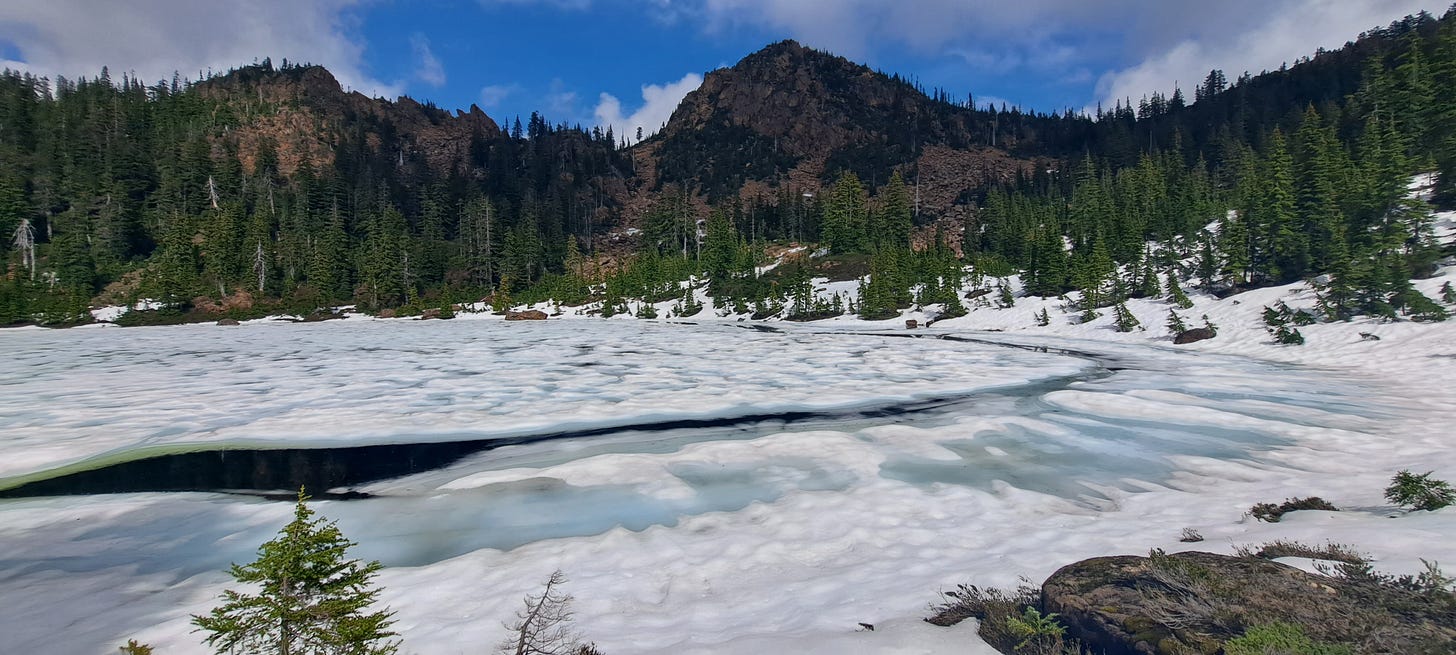
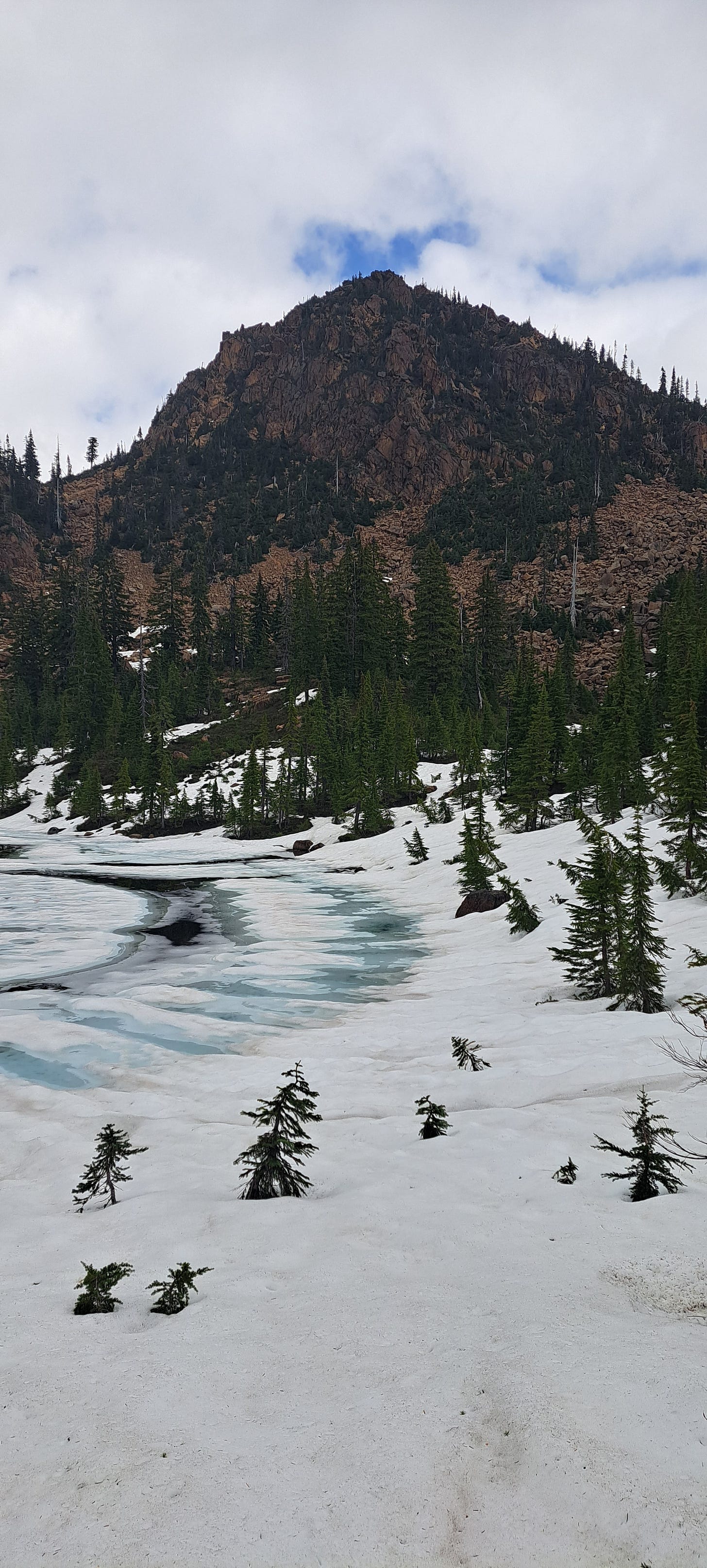
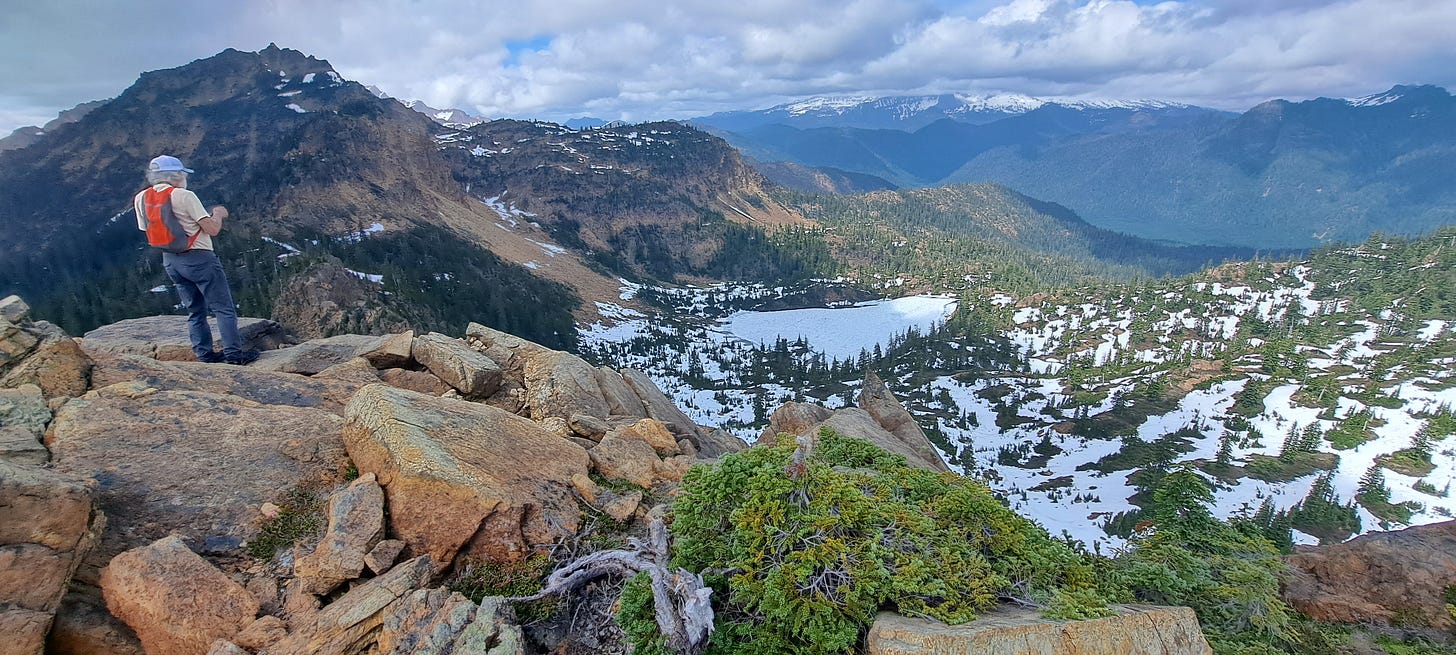
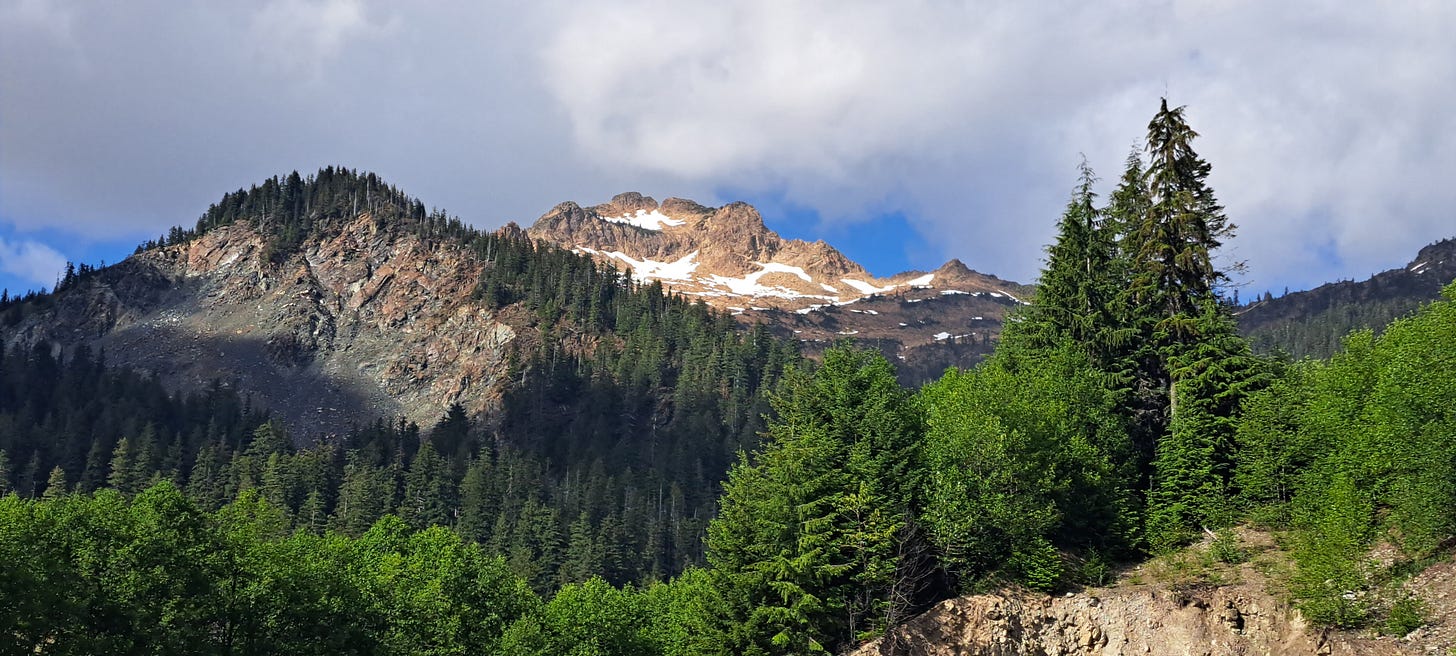
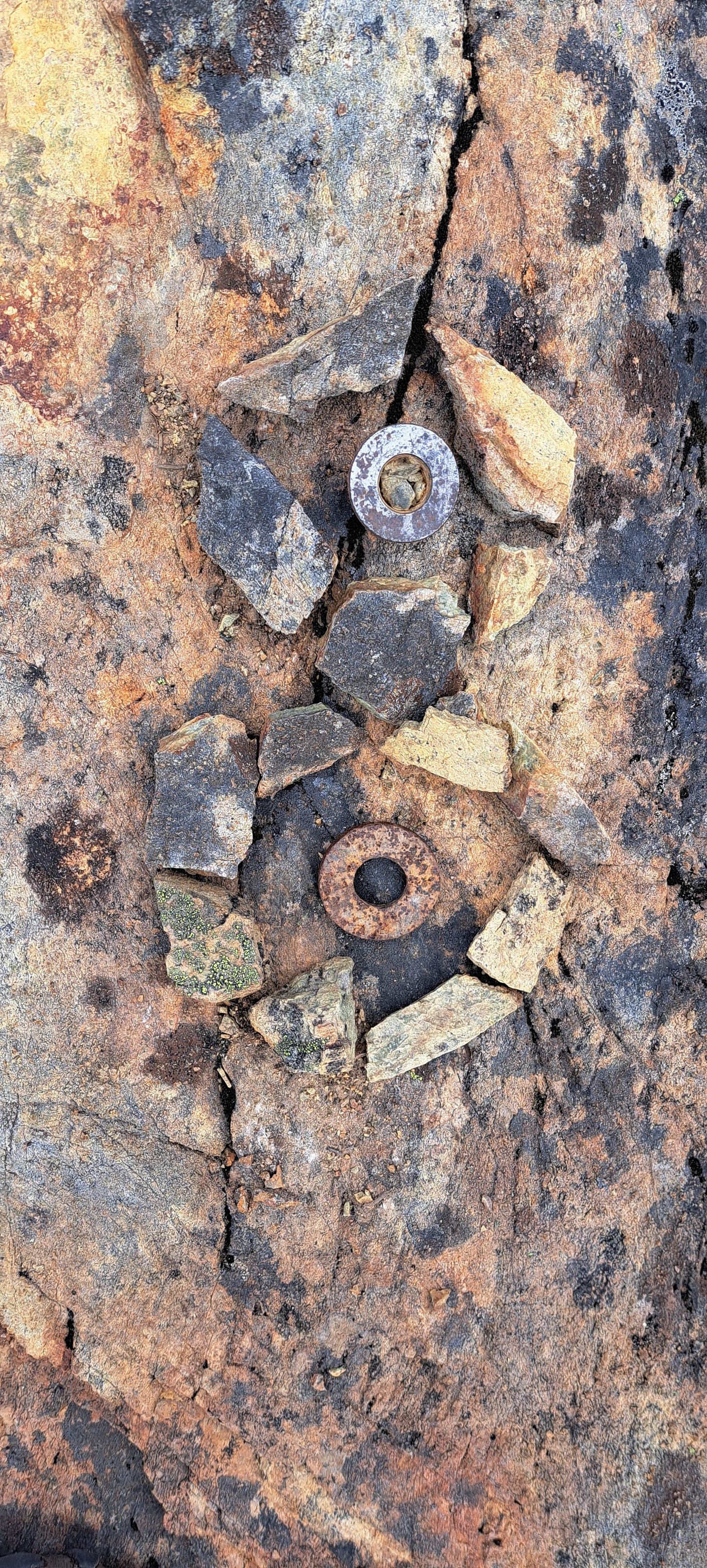
Great photos and excellent story telling Ken!. More please!